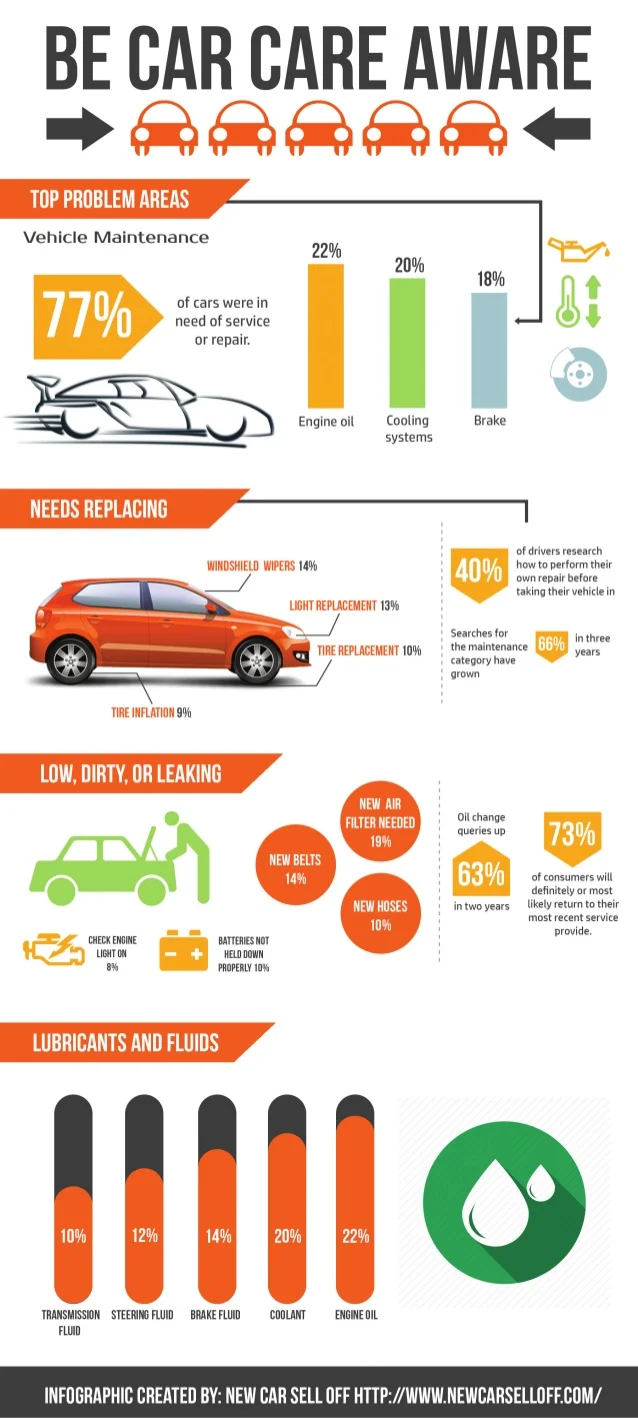Deciphering Your Vehicle'S Caution Indicators: What They Genuinely Indicate
Deciphering Your Vehicle'S Caution Indicators: What They Genuinely Indicate
Blog Article
Material Produce By-Vinson Winters
When you're behind the wheel, those glowing caution lights on your control panel can be a little bit perplexing. Do you understand what they're trying to tell you regarding your auto's health? Recognizing the significance of these lights is vital for your security and the longevity of your automobile. So, the next time among those lights appears, would not you intend to analyze its message properly and take the necessary steps to resolve it?
Common Caution Lights and Interpretations
Recognize usual caution lights in your cars and truck and understand their meanings to make sure risk-free driving.
The most common warning lights include the check engine light, which indicates concerns with the engine or discharges system. If car drycleaning near me begins, it's essential to have your car examined promptly.
https://brake-rotor-replacement-c06284.blogpayz.com/32180771/just-how-to-pick-the-right-automobile-outlining-solution-for-your-demands alerting light suggests reduced oil stress, needing prompt focus to prevent engine damages.
A blinking battery light might suggest a faulty charging system, possibly leaving you stranded otherwise dealt with.
The tire stress monitoring system (TPMS) light notifies you to low tire pressure, affecting automobile stability and fuel effectiveness. Neglecting this might lead to unsafe driving problems.
The ABS light suggests an issue with the anti-lock stopping system, compromising your ability to quit rapidly in emergency situations.
Last but not least, the coolant temperature level advising light warns of engine overheating, which can result in extreme damage if not settled swiftly.
Recognizing these typical warning lights will aid you address concerns immediately and keep risk-free driving conditions.
Relevance of Prompt Attention
Understanding the typical warning lights in your vehicle is just the first step; the importance of immediately dealing with these cautions can not be stressed sufficient to ensure your safety on the road.
When a warning light illuminates on your dashboard, it's your automobile's way of communicating a possible concern that requires focus. Overlooking these cautions can cause much more serious troubles in the future, endangering your security and potentially costing you a lot more in repairs.
Motivate attention to advising lights can stop breakdowns and mishaps. As an example, a flashing check engine light can suggest a misfire that, if left unattended, can cause damage to the catalytic converter. Resolving this quickly can save you from a costly repair work.
Likewise, a brake system cautioning light could signal reduced brake fluid or worn brake pads, essential parts for your safety and security when driving.
Do It Yourself Troubleshooting Tips
If you see a caution light on your control panel, there are a few do it yourself repairing suggestions you can attempt before looking for expert aid.
The primary step is to consult your vehicle's guidebook to recognize what the certain warning light shows. In some cases the concern can be as simple as a loosened gas cap causing the check engine light. Tightening up the gas cap may fix the trouble.
Another typical concern is a low battery, which can trigger different alerting lights. Examining the battery links for corrosion and guaranteeing they're protected may deal with the problem.
If a warning light continues, you can try resetting it by detaching the automobile's battery for a couple of mins and after that reconnecting it. Furthermore, inspecting your lorry's fluid degrees, such as oil, coolant, and brake liquid, can aid repair cautioning lights related to these systems.
Conclusion
To conclude, comprehending your cars and truck's warning lights is necessary for maintaining your car running efficiently and safely. By immediately resolving these informs and understanding what they mean, you can stay clear of pricey repair services and possible malfunctions.
Keep in mind to consult your cars and truck's manual for certain details on each cautioning light and take action as necessary to ensure a trouble-free driving experience.
Stay informed, remain risk-free when traveling!
